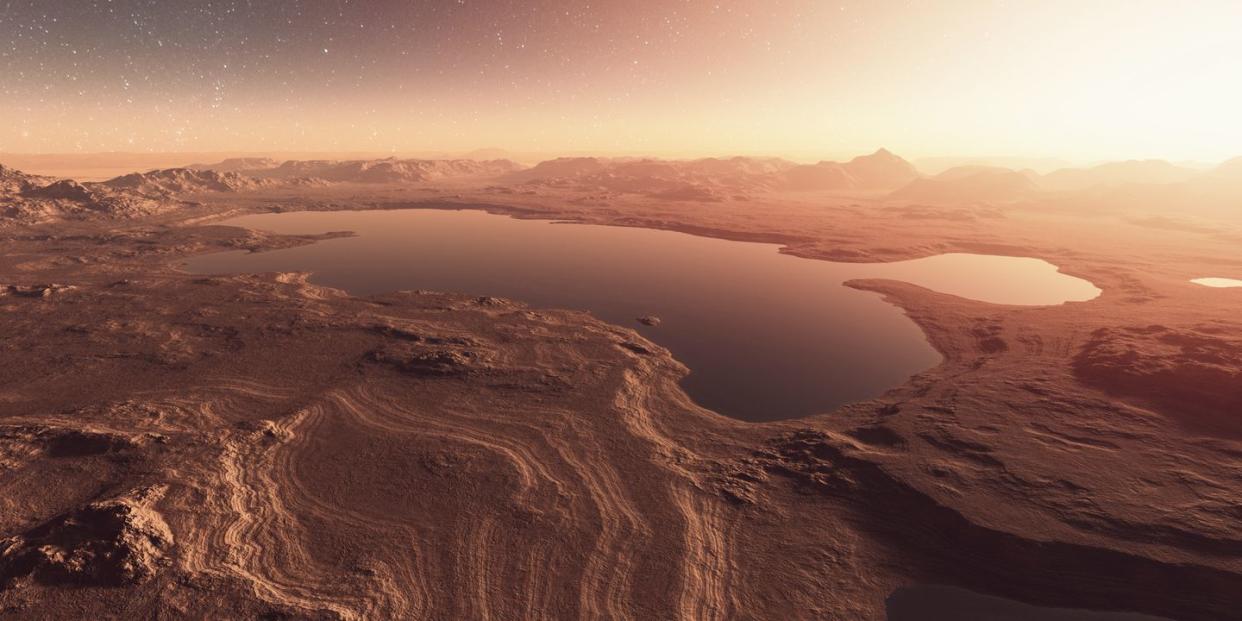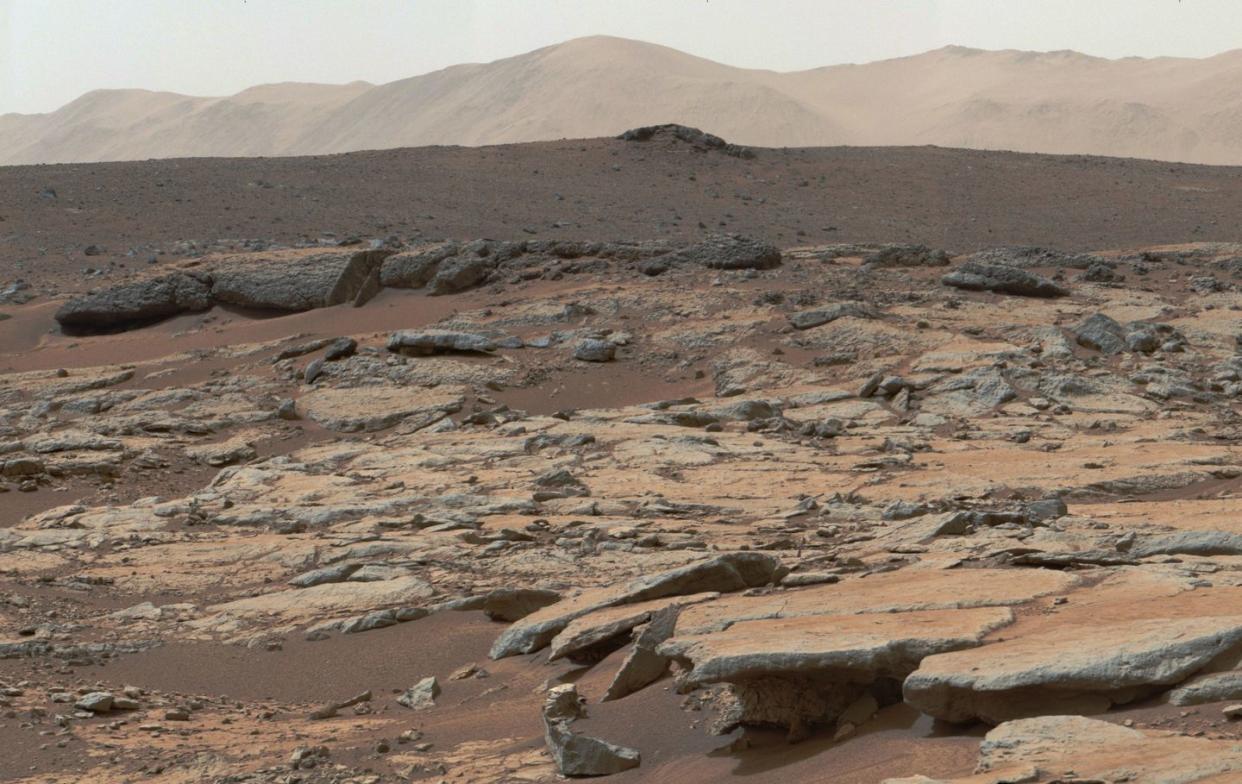A Warm, Water-Filled Mars May Have Once Hosted a World of Underground Microbes

"Hearst Magazines and Yahoo may earn commission or revenue on some items through the links below."
A new study in Nature Astronomy promotes the theory that Mars’s crust provided favorable conditions for an underground world of microbial life.
Living underground, the microbes would have been shielded from radiation.
But the warmth of a younger Mars may have been cooled by the methane produced by the microbes, stopping any chance of continued growth.
French researchers believe simple microbial life may have once existed underground on Mars. They also believe the very presence of those microbes would have been enough to suffocate their life.
The new study, published in Nature Astronomy, says data from the Martian crust shows that when Mars was warmer and wetter, the environment would have been ripe for underground colonies of microbes. The dirt would have protected the microbes from harmful radiation, allowing them to thrive. The researchers specifically focused on whether dihydrogen-based methanogens would have been able to live on Mars, because hydrogenotrophic methanogenesis—the conversion of carbon dioxide to methane using dihydrogen—is thought to have been one of the earliest existing metabolisms for life on Earth.
🚀 You love Mars. So do we—join Pop Mech Pro.
Yet, the researchers believe this underground world may have caused its own demise: the methane the microorganisms emitted would have been enough to kill them off.
“We find that subsurface habitability was very likely, and limited mainly by the extent of surface ice coverage,” the study says. “Biomass productivity could have been as high as in the early Earth’s ocean. However, the predicted atmospheric composition shift cause by methanogenesis would have triggered a global cooling event, ending potential early warm conditions, compromising surface habitability, and forcing the biosphere deep into the Martian crust.”
The researchers, led by Boris Sauterey, believe the microbes would have pulled hydrogen out of an atmosphere heavy in carbon dioxide and replaced it with methane, forcing organisms close to the surface deeper in search of survival. In the already warm climate of Mars, this trade-off would not have been a favorable outcome for either the planet or the microbes—a stark contrast to the theories of what happened on Earth, where this give-and-take would send microbes closer to the surface.

The study appeared just weeks after other research was published in Earth and Planetary Science Letters, which supports that the earliest form of Mars was wet with a dense atmosphere that supported warm—or even hot—oceans for millions of years. The researchers show water vapor condensed and stayed on early Mars by using a model of the Martian atmosphere that “links the high temperatures associated with the planet’s formation in a molten state through to the formation of the first oceans and atmosphere,” according to a news release. Data from three-billion-year-old clay obtained by the Curiosity rover supports their claims.
“We believe we have modeled an overlooked chapter in Mars’s earliest history in the time immediately after the planet formed,” says Kaveh Pahlevan, SETI Institute research scientist and lead author of the Earth and Planetary Science Letters study, in a news release. “This dense atmosphere would have produced a strong greenhouse effect, allowing very early warm-to-hot water oceans to be stable on the Martian surface for millions of years until the [molecular hydrogen] was gradually lost to space. For this reason, we infer that—at a time before the Earth itself had formed—Mars was born wet.”
The two studies don’t cover the same time period: with Pahlevan’s model focusing on the Hesperian period of roughly 3,700 to 3,000 million years ago, and Sauterey’s study focusing on the earlier Noachian period of 4,100 to 3,700 million years ago. But what they do have in common is highlighting the need to better understand how Martian climates changed over time—and why.
You Might Also Like
